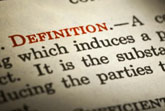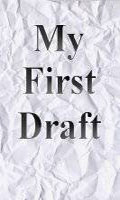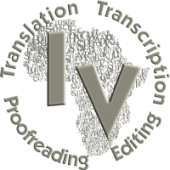
 Ten common English word usage mistakes I often come across in my work as an editor and copy corrector that spell-checkers do not find, with explanations and examples of proper use:
Ten common English word usage mistakes I often come across in my work as an editor and copy corrector that spell-checkers do not find, with explanations and examples of proper use:
- There vs. Their vs. ‘They’re
There is an indication of location.
Example: I would like to see that cell phone over there.
Their is a possessive version of they.
Example: They took their car to the mechanic.
They’re is a contraction, short for they are.
Example: They’re going to the cinema tonight.
- A lot vs. Allot vs. Alot
A lot is an indication of quantity.
Example: I have a lot of laundry to do.
Allot means to distribute.
Example: I will allot you two cold drinks.
Alot is not a word.
- I.e. vs. E.g.
I.e. means “in other words.”
Example: Writing more articles increases your website traffic. I.e., it will bring you more exposure.
E.g. means “for example.”
Example: I have a lot of chores to do. E.g., laundry, dishes, cleaning, etc.
- To vs. Too vs. Two
To is a function word to indicate relative position.
Example: We took the boat to the lake.
Too can indicate excessiveness or in addition to.
Example: The food was too spicy.
Example: I would like to go too.
Two is the number 2.
Example: I want two biscuits.
- Its vs. It’s
Its is the possessive version of it.
Example: Its door came off the hinges.
It’s is a contraction, short for “it is.”
Example: It’s a beautiful day.
- You’re vs. Your
You’re is a contraction, short for “you are.”
Example: You’re the kindest person I’ve ever met.
Your describes the possessor as someone else.
Example: Your dog barks a lot.
- Loose vs. Lose
Loose is an adjective, the opposite of tight or contained.
Example: I have loose change in my pocket.
Lose is a verb that means “to suffer the loss of.”
Example: I hope you don’t lose your money.
- Choose vs. Chose
Choose is a present tense verb meaning “to select.”
Example: I choose to eat healthy foods.
Chose is a past tense verb meaning “to select.”
Example: I chose to eat healthy foods.
- Effect vs. Affect
Effect is usually a noun meaning “result.”
Example: The effect of increased traffic to your website is directly related to the quality of your articles.
Affect is usually a verb meaning “to influence.”
Example: I hope this article will affect you in a positive way.
- Know vs. No vs. Now
Know is usually a verb meaning “to understand.”
Example: I know you are not coming to the cinema.
No is a negative reply, refusal or disagreement.
Example: There is no problem with the car.
Now is usually an adverb meaning “at the present time or moment.”
Example: Now I can easily write and publish my articles. - With Regard To vs With Regards TO
With Regards To is an extended greeting to an esteemed person at the end of a letter
Example: With regards to your dear mother.
With Regard To is a clumsy, ponderous, pompous, redundant and pleonastic way of saying “about”.

 it is very important to use language that fits your audience and matches your purpose when you write. Inappropriate language uses will damage your credibility, undermine your argument, or alienate your audience. This handout will cover some of the major issues with appropriate language use:
it is very important to use language that fits your audience and matches your purpose when you write. Inappropriate language uses will damage your credibility, undermine your argument, or alienate your audience. This handout will cover some of the major issues with appropriate language use:

 During the editing process, things will be found which need to be edited out. These are some of the things to look for:
During the editing process, things will be found which need to be edited out. These are some of the things to look for: